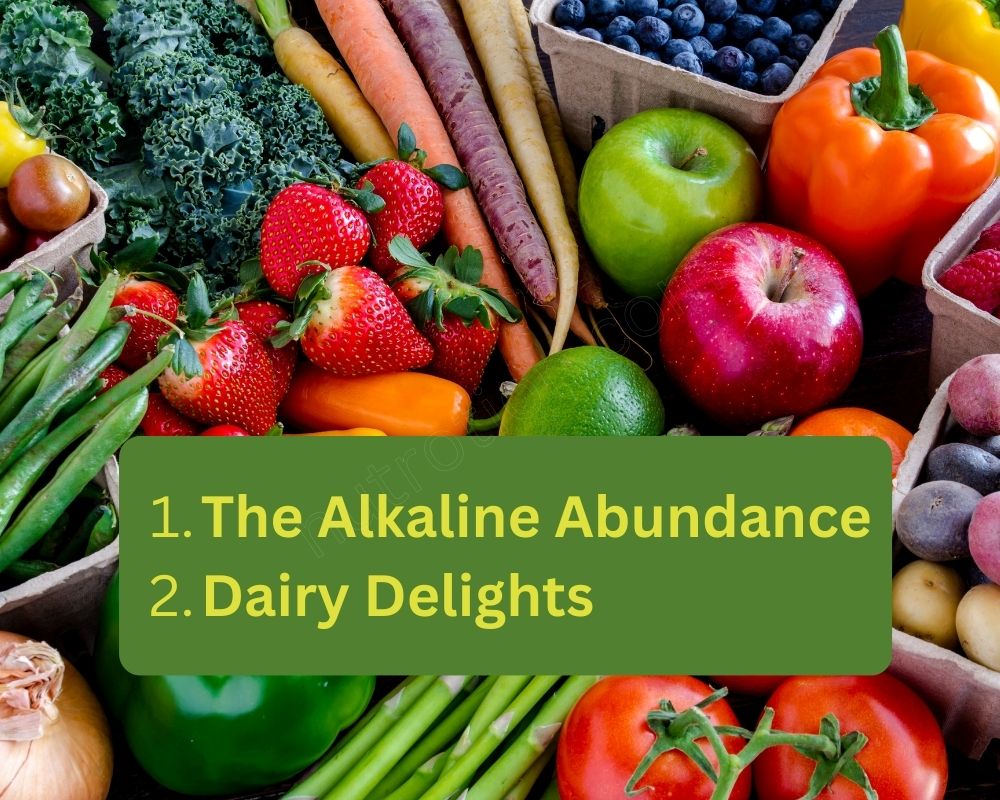Our meals comprise a symphony of taste and purpose, in which the power of acids and bases in this culinary masterwork is the key factor. Through knowledge of the interactions among these elements within our plates, food appreciation and studying the impact on general well-being can be enhanced.
Acidity on the Menu

- The Sour Sensations: Citrus fruits like oranges, lemon, and grapefruit are high on healthy acids like citric acid, malic acid, etc. This acid not only satisfies our taste buds with a refreshing tang but also aids in the breakdown of proteins in the stomach. They stimulate the release of gastric juices and enzymes in the salivary glands, which start breaking down carbohydrates even before reaching the stomach. This leads to an energy saving in the digestion process overall.
- Savory Sources of Acidity: This acidic attribute isn’t limited to only the citrus kingdom. Tomatoes have their sour kick because they are rich in citric and malic acid, while vinegar offers acetic acid, which is also a sour component. These acidic ingredients not only serve as a flavoring element but also have had a meaning in food preservation for a long time. The acidic environment slows down the growth of bacteria and thus preserves the freshness of the risky foods for a longer period. This way of preservation was useful before modern techniques such as refrigeration.
Benefits of Dietary Acids

- Beyond Digestion: Acids play a crucial role in digestion, but their benefits extend beyond the stomach. Certain acids like those present in a lot of fruit can be good antioxidants. The matter of fact is that these antioxidants shield our cells from damage caused by free radicals which may be the probable cause of chronic diseases such as heart disease and cancer.
- Flavor Architects: With the use of a little acidity, you can surprise people in the kitchen. It does this by being empty and light – balancing the richness of fatty or creamy dishes. The piquancy of lemon juice in hollandaise sauce, or the zestiness of vinaigrette dressing galloping through a salad is imaginable. Not only that, it helps to balance out the sweetness, thus a more interesting and complex flavor profile. Acidity can be that magic ingredient to make fruits with natural sugars even sweeter and give them a more appetizing taste.
Bases Lend a Hand

- The Alkaline Abundance: Contrary to popular belief, most fruits and vegetables are alkaline. Leafy vegetables such as kale and spinach and fruits like bananas and legumes are typical foods containing a set of alkaline compounds. The neutralizing property of these alkaline substances may help with the process of ingesting the acids that are present in the diet. This is an integral part of the body’s pH homeostasis process.
- Dairy Delights: Dairy products such as milk and some cheeses, with their mild alkaline properties, add to the smoothness and creamy nature of the product. This creaminess is further enriched by the calcium found in dairy containing both proteins and fats. Calcium is one of the key factors that lead to the creation of a micellar network of casein micelles which stick together fat globules and water and thus give us that fabulous dairy-like feel in our mouths.
Benefits of Dietary Bases

- Mineral Powerhouse: An alkaline diet is most likely to be a source of essential minerals like calcium and magnesium that are present in alkaline foods. They are the main constituents of strong bones and teeth, and also are very important to muscle activity and nerve transmission. For example, calcium is essential for muscle contraction and relaxation, while magnesium acts as a cofactor for over 300 enzymes, crucial for various physiological processes.
- A Web of Potential Health Benefits: Although more studies are required, there is evidence that alkaline diets may have other benefits as well. The possible benefits of these molecules are diminished inflammation and improved glucose management in the blood. Chronic inflammation is one of the significant factors for many health disorders, however, some evidence reveals that alkaline diets help to decrease inflammatory response. Besides, some alkaline foods, such as legumes, may also have its effect on sugar regulation because of their fiber makeup. Yet, a balanced diet is significant, and these possible advantages should not detract the consideration of the importance of variety. In addition to the rich mix of foods that are included in a healthy diet plan, there are many other factors that are responsible for promoting inflammation and managing blood sugar levels.
The Importance of Balance
The human body is a masterpiece of self-regulation; it has complex mechanisms or mechanisms for keeping the internal pH at a healthy level. On the other hand, an eating habit that is always either extremely acidic or extremely alkaline may not be the preference. The use of acids and bases in food can boost one’s health but only when all elements of the plate are balanced. Bringing in all kinds of acidic and alkaline foods at each meal, we maintain the flavor of our daily diet, but also offer our bodies a full spectrum of nutrients that it needs to prosper. Imagine your plate like an artist’s palette, with a delightful blend of hues (and tastes) that span both the acidic and alkaline ends. You can create a work of art which taste good and yet good for your body by thoughtfully choosing different ingredients.
Thus, whenever you eagerly reach out for a delicious orange or a bag of almonds, remember that it is not just about your craving but a beautiful concerted dance of acid and base on your plate. Engage yourselves with this gastronomical science and welcome this trip that will contribute to a healthier you!

